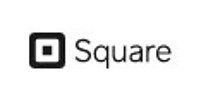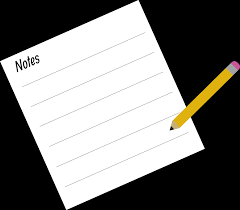When I sold my March covered calls last month, I knew that I was taking on a higher risk due to the run up in the tech stocks that I bought. Well, that risk bit me in the behind almost immediately!
I’m going to detail the results of the option trades, the lessons learned, and the strategy going forward. Let’s get started!
Results From Call Expiration
When I sold the covered call options for March 19, I knew that many of the stocks I was purchasing had pulled back from their highs. Unfortunately, the drop in tech stocks was much deeper than I anticipated.
Let’s look at the results:
Airbnb (ABNB)
I had purchased 100 shares for $200.35 per share and sold 1 covered call option with a $202.50 strike price for $14.60 per share for $1,460.
The option was not exercised, and ABNB closed at $194.39 on the call date. My new cost basis after fees is $18,576, or $185.75 per share.
Lemonade (LMND)
I purchased 300 shares at $142 per share and sold 3 options with a $143 strike price for $14.95 per share, which gave me $4,485.
The option was also not exercised, and the stock closed at $99.70. The new cost basis for LMND after fees is $38,117.17, which is $127.06 per share.
Crowdstrike (CRWD)
The 100 shares of CRWD bought cost $231.66 per share. I sold 1 call option at the $235 strike price for $14.00 per share, giving me $1,400.
Again, the option was not exercised, and CRWD closed at $194.63 per share. My new cost basis is $21,766.73 after fees, which is $217.67 per share.
Bandwidth (BAND)
I had purchased 200 shares of BAND at $182 per share and sold 2 call options at the $185 strike price for $13.60 per share, which was $2,720.
The options were not exercised, and the stock closed at $123.20 on the call date. The new cost basis is $33,681.44, or $168.41 after fees.
Innovative Industrial Properties (IIPR)
The 100 shares of IIPR purchased cost $214.50 per share, and I sold 1 call option at the $220 strike price for $10.90. This gave me $1,090.
Like the others, the option was not exercised, and the stock closed at $178.24 on the call date. My new cost basis for IIPR after fees is $20,360.72, or $203.61 per share.
Square (SQ)
I purchased 100 share of SQ at $272.75 per share and sold 1 call option at the $275 strike price. The premium received was $17.55 per share for $1,755.
This option was also not exercised, with the stock closing at $224.84. The new cost basis of SQ is $25,520.73 after fees, which is $255.21 per share.
Appian (APPN)
The 100 shares of APPN I bought were $197.50 per share. The call option sold for $15.20 per share with the $200 strike price, which gave me $1,520.
Again, the option was not exercised, and APPN closed at $151.66 on the call date. I have a new cost basis of $18,230.76 after fees, or $182.31 per share.
Fiverr (FVRR)
I bought 100 shares of FVRR for $293 per share and sold 1 call option at the $300 strike price. The premium received was $21.80 per share for $2,180.
The option was not exercised, and FVRR closed at $224.93. My new cost basis after fees is $27,120.74, which is $271.21 per share.
Fastly (FSLY)
I watched FSLY during the month waiting for an increase in the stock price to present an opportunity to write a call option. I wound up not selling an option this month, and my cost basis is still $17,876.69, or $89.38 per share, for my 200 shares.
Pinterest (PINS)
I bought 200 shares of PINS for $66.02 per share and sold 2 contracts at the $70 strike price. The premium received was $1.93 per share for $386.
This option was exercised (yay!), with a profit of $1,180.56 after adding in the premium and subtracting fees. It’s worth noting that the option was sold on March 9th, so this profit was produced in just 10 days!
Skillz (SKLZ)
I purchased 200 shares of SKLZ at $24.89 per share and sold 2 contracts for the $25 strike price. My call options sold at $3.06 per share giving me $613.
This option was also exercised, and I received a profit of $633.57 after premium and fees. This is also a 10 day profit, so PINS and SKLZ were the only bright spots in an otherwise dismal month!
Trading Notes And Strategy Changes
I’m going to start out my trading notes with the positive things this month, especially since there are only a couple of them!
First, I am pleased with the decision to sell my shares of SRPT and reinvest the funds into PINS and SKLZ. I was able to buy them at decent prices and turn a profit on those options.
Second, despite the fact that almost all of my option strategy stocks are under water at this point, I feel that everything in my portfolio is a good investment.
However, none of the stocks I’m holding were bought at an entry point that I’m happy with. In my February update, I said I’d “only buy if I determine that the price is a decent entry point if I need to hold it longer term”.
Well, as a buy-and-hold investor who has seen just how far pullbacks can go down in high-flying stocks, it’s pretty clear that I didn’t do that! Why?
I got greedy, pure and simple. After 2 months of over sized gains, I convinced myself that a good cushion of profits, a pullback in the stock prices, and the premiums received would all provide enough downside protection.
I’ve been through enough bear/bull stock market cycles to be smarter than that. But I let the lure of high premiums cloud my better judgment, and the result–possible large losses.
While I’m satisfied with every stock I own and am more than willing to hold for long term, I completely blew the risk/reward ratio. My chances for profitability in covered call option trading were undercut by not considering my entry points more carefully.
Last month I also felt that I was diversifying by only purchasing 100 shares of many of my stocks. Again, the stock market spanked me for justifying too much risk.
I certainly understand what real diversification is, and buying more high-flying tech stocks instead of just 3 or 4 isn’t it!
Strategies Moving Forward
The goal of my covered call strategy is to make a profit and earn income from my assets. However, because of my poor decision making, I need to be focused on minimizing losses for several of my holdings.
While holding these stocks as they recover is part of my strategy, it needs to be my last resort choice. This is because I don’t want to tie up my money any longer than I have to. I want my money to be making money.
So, to that end, my plan is to watch the stock and option prices and look for opportunities to write calls that will put me close to break even if exercised. Patience to wait for the right set up will be paramount.
In order to better find these opportunities, I’m going to look at writing options with a little bit longer call date. So I’ll sell April 16th calls when possible, but will also look at May 21st calls as well.
For each stock I’ll need to try to get as close to breaking even as possible, while ensuring that I’m making responsible, patient choices.
Another strategy moving forward is to update my plan to better manage risk. The rule initially has been to write covered calls that represent between 5%-10% of the underlying stock’s value.
This can only be achieved by using highly volatile stocks. However, it’s become very clear that I don’t need to take this kind of risk to reach my goal of earning $5,000 per month in income.
The fact is that I had really good luck for 2 months, which led to some overconfidence, which led to a little recklessness. Understanding the difference between what’s luck and what’s great stock picking is one of the rules of my plan.
So to better handle risk, my new rule is to target writing calls that represent ~3%-5% of the underlying stock. I’ll be able to choose less volatile stocks, which in turn should provide a more stable income with less overall risk.
The last change that I’m making this month is to the rule that I have no more than 50% of my portfolio allocated to my covered call strategy. I’d like to allow myself the opportunity to sell calls on other positions I own.
Every few months I like to check whether I need to rebalance any of my positions. I make changes for a variety of reasons, including that holdings that have become over weighted or that I’ve found better dividend potential elsewhere.
If it makes sense to do any kind of rebalancing, I’d like to take advantage of opportunities to write more calls to mitigate potential losses in other holdings.
OK, with those changes and strategies in mind, let’s get to the covered call options I’ve sold this month!
New Covered Call Options
My intention is to always sell a covered call that expires the next month. Whenever possible, I wrote calls for the April 16th call date. When it made better financial sense, I wrote calls expiring May 21st instead.
Here are the calls written for April 16th:
Airbnb (ABNB)
My cost basis for the 100 shares of ABNB is $185.76 per share. I sold 1 call option for the strike price of $200 and received a premium of $10.76 per share for $1,076 before fees.
This premium represents 5.8% of the cost basis for this stock.
Pinterest (PINS)
I repurchased 200 shares of PINS for $71.87 per share. The 2 option contracts sold for $3.00 per share for the $75 strike price, realizing $600 before fees.
The premium represents 4.17% of my PINS investment.
Skillz (SKLZ)
I purchased 400 shares of SKLZ for $25.89 per share and sold 4 contracts at the $30 strike price. The premium received was $1.61 per share for $644 before fees.
This premium represents 6.2% of the investment.
Stitch Fix (SFIX)
Stitch Fix is one of those companies that is a game changer for online clothes buying that I believe has a great deal of potential. I’ve been waiting for a significant pullback to invest, and I believe it’s a great fit for writing covered calls.
I purchased 300 shares of SFIX for $52.35 a share. The 3 call options sold for $3.50 per share with the $53 strike price, resulting in $1,050 before fees.
The premium represents 6.68% of my investment.
Prudential (PRU)
Prudential is an insurance/financial services company that offers a very good dividend. I believe it’s a quality stock that is stable with a decent upside potential along with a good option premium.
I purchased 300 shares at $86.49 per share and sold 3 contracts at the $92.50 strike price. The premium was $3.16 per share for $948 before fees and represents 3.65% of my PRU investment.
Village Farms International (VFF)
Village Farms is an up and coming marijuana stock that I had purchased along with several others. I believe it’s only a matter of time before regulations relax and allow marijuana usage to expand legally and want to own shares of good potential companies.
However, I also own shares in another IRA and while I wait for the stock to rise, I’d like to earn some profits in this portfolio with covered calls.
I have 700 shares at a cost basis of $12.28. The 7 contracts sold for $1.08 per share at the $13 strike price resulting in $756 before fees.
The premium represents 8.8% of my total VFF investment.
Here are the covered calls written for May 21st:
Crowdstrike (CRWD)
The cost basis of my 100 shares of CRWD is $217.67. I sold 1 contract at the $200 strike price for $14.60 per share, resulting in $1,460 before fees.
If this option is exercised, I’d have just over $3 a share loss. After seeing the price move down nearly $50 per share at one point, I’ll be totally happy with a loss of only $3!
The premium received represents 6.7% of my total CRWD investment.
Appian (APPN)
The 100 shares of APPN have a cost basis of $182.31 per share. The option call sold at the $165 strike price resulted in $16.63 per share for $1,663 before fees.
If the option is exercised, I will break even on this stock. The premium represents 9.12% of my total investment.
Fastly (FSLY)
The cost basis of FSLY has been brought down to $89.38 per share with by writing covered calls. I was able to sell a call at the $85 strike price for $4.50 per share, or $900 before fees.
I will break even on this stock as well if the option is exercised. The premium represents 5% of the total investment in FSLY.
Potential Monthly Profit
Many of the premiums received this month will result in a small or no profit, just basically trying to preserve the money made in the last 2 months. So there’s no point in talking about potential monthly profit at this point.
I’m still holding several stocks that I’ll be hopefully writing covered calls for, and will update this blog post with any changes.
I hope all of my readers have had a much more profitable month, and I’d love to hear your experiences in the comments below!

**Option Updates**
4/2/2021
Over the past few days I’ve found opportunities to write covered calls on 3 more stocks I’m holding:
Innovative Industrial Properties (IIPR)
My cost basis for IIPR is $203.61 per share. I sold a May 21st call at the $195 strike price for $10 per share, which resulted in $1,000 before fees.
If this option is exercised, it will put me slightly above the break even point with this stock. The premium represents 4.9% of my investment.
Fiverr (FVRR)
FVRR’s cost basis is $271.21 per share, and I sold the May 21st call at the $260 strike price. The $10.25 per share premium gave me $1,025, which is break even if the option is exercised.
This premium represents 3.78% of my FVRR investment.
Square (SQ)
The SQ cost basis is $255.21 per share. I sold a May 21st call for $15 per share at the $240 strike price. This premium of $1,500 would put me at break even upon exercise and represents 5.9% of my investment.
As of today, I still have 2 stocks that have not recovered enough in price to sell a covered call at an acceptable strike price–Bandwidth (BAND) and Lemonade (LMND). I’ll be sure to update this post again!


